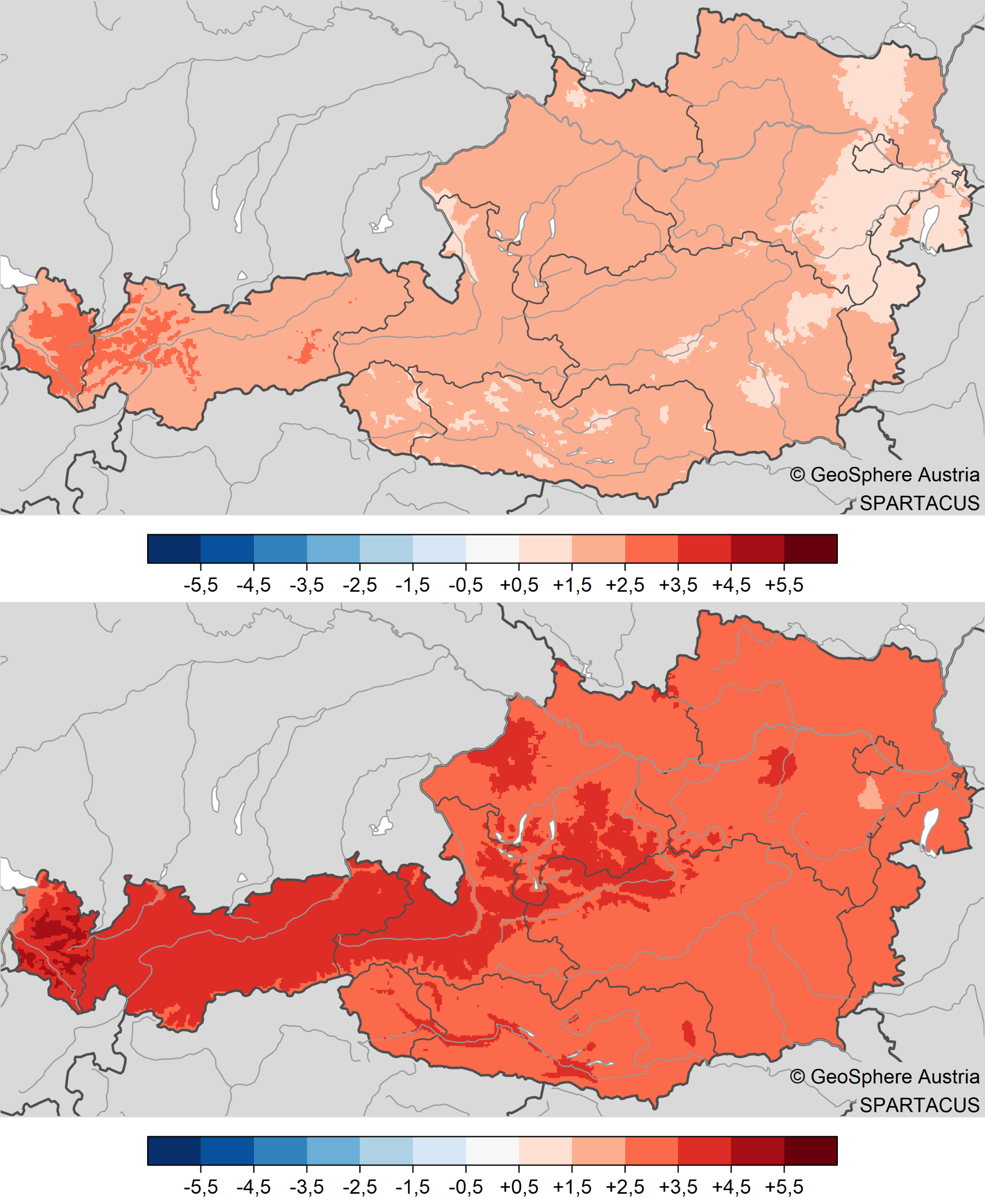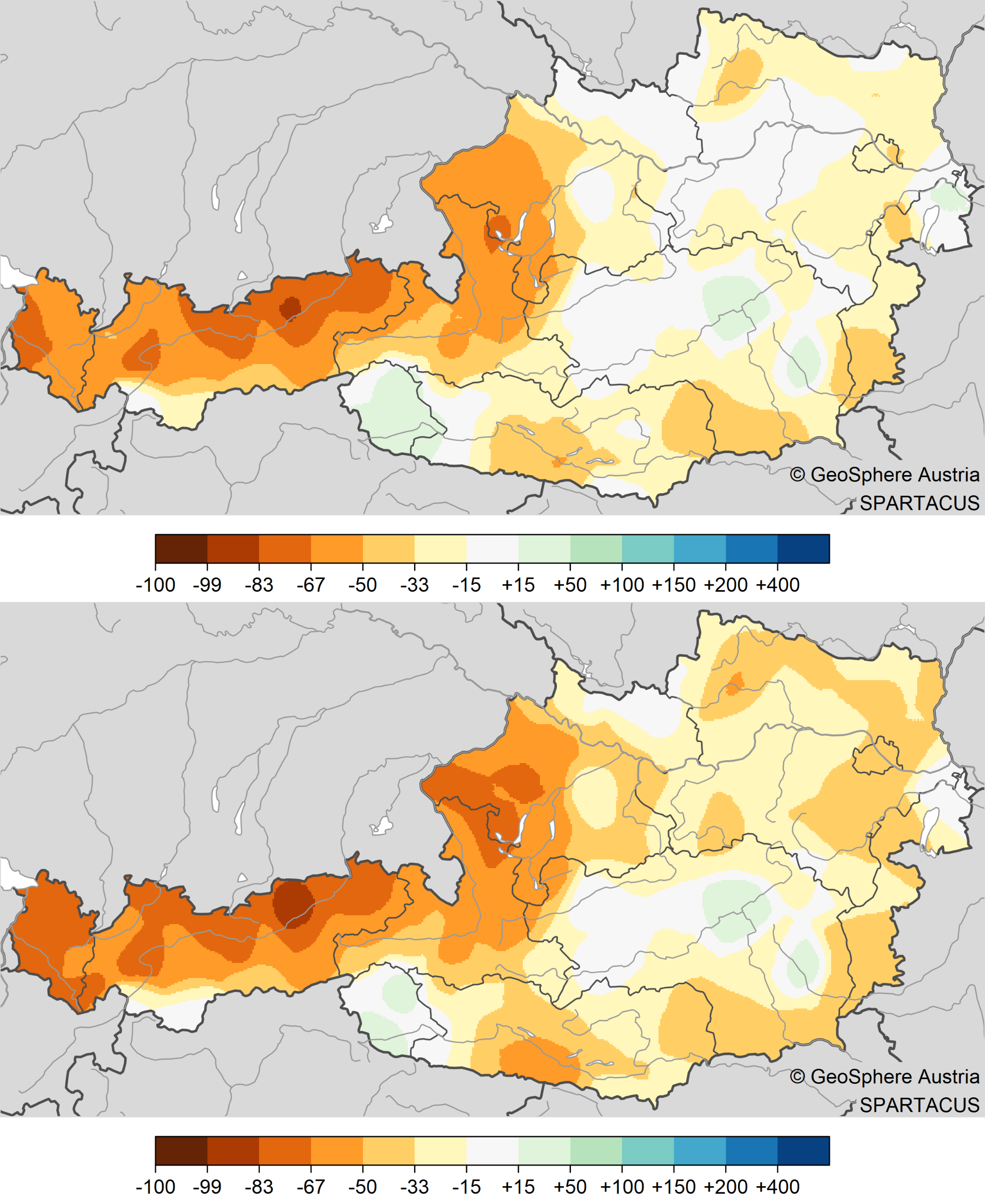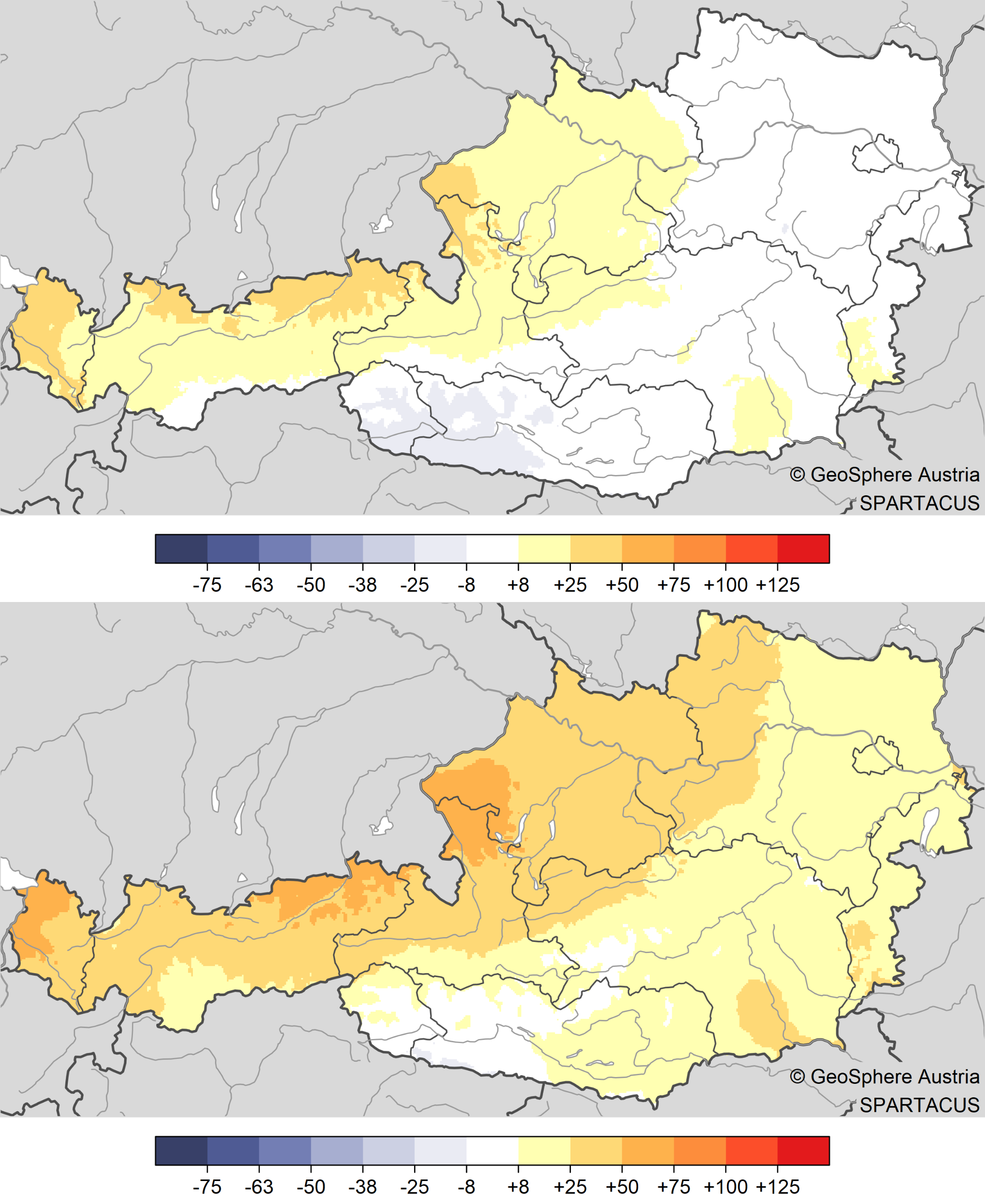April 2025: very mild and partly dry
One of the ten warmest April months in recorded history
There was only one period in April 2025 when it was a few days cooler than the long-term average across Austria. This was roughly from 6 to 9 April. During this period, the lowest temperature of the month was also measured in the lowlands, at -8.2 degrees on 9 April in Liebenau in the Mühlviertel in Upper Austria.
However, the majority of April was warmer than average and many regions also recorded the first summer day of the year (at least 25 degrees). The highest temperature of the month was recorded in St. Pölten on 16 April at 28.3 degrees.
In the preliminary evaluation, April 2025 is 1.9 degrees above the average of the 1991 to 2020 climate period in Austria's lowlands and 2.0 degrees above the average in the mountains,’ says climatologist Alexander Orlik from GeoSphere Austria, ’which puts Austria in 9th place in the series of the warmest April months in the 259-year measurement history in the lowlands and 8th place in the 175-year mountain measurement series in the mountains.’
Compared to the 1961-1990 climate period, April 2025 was 3.4 degrees above average in the lowlands and 3.6 degrees above average in the mountains.
The amount of precipitation in April 2025 was roughly average in most of Austria, with deviations of -15 to +15 per cent from the long-term average. It was significantly too dry in the area from Vorarlberg to North Tyrol and large parts of Salzburg to western Upper Austria, with around 30 to 85 per cent less precipitation than the long-term average.
In some places it was also significantly too wet, such as in East Tyrol and northern Burgenland, with 15 to 50 per cent more precipitation than the average.
In the Austria-wide evaluation, there was 30 per cent less precipitation than in an average April. The average duration of sunshine across Austria was around the average (+7 per cent).
In April, the snow cover in the high mountains typically reaches the highest levels of the winter half-year. This was also the case this year, although the snow depths were significantly lower than the long-term average. For example, snow depths of up to 253 centimetres were measured at the Sonnblick Observatory of GeoSphere Austria (S, 3106 m above sea level) in April 2025. This was 42 per cent less than the average, as a maximum snow depth of 439 centimetres is measured on the Sonnblick in an average April. For comparison: the extreme values for maximum snow depth in April on the Sonnblick range from around two metres in 1968 to almost ten metres in 1944.
Despite a cold snap in the first third of April, the largely too warm weather in March and April favoured the development of vegetation, such as the flowering of blackthorn, horse chestnut, apple and lilac as well as the leaf and needle budding of copper beech and larch.
For example, the onset of blackthorn flowering over Austria on 29 March 2025 was five days earlier than the long-term average for 1991-2020 and nine days earlier than the long-term average for 1961-1990, while the onset of horse chestnut flowering over Austria on 17 April 2025 was seven days earlier than the long-term average for 1991-2020 and 15 days earlier than the long-term average for 1961-1990.
Translated with DeepL.com (free version)



